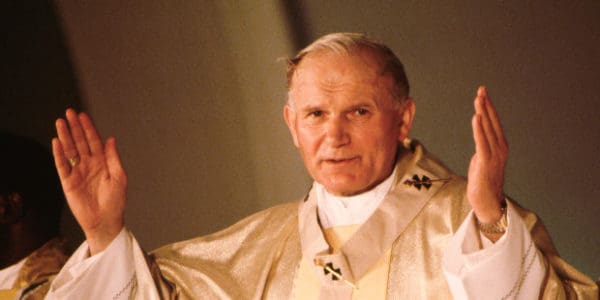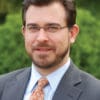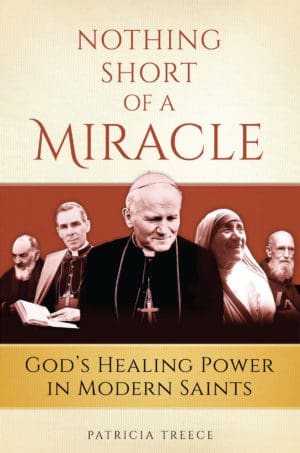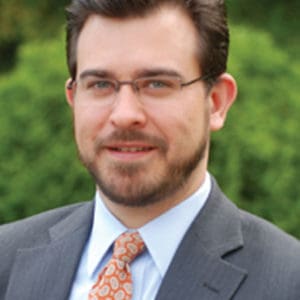The Miracle of John Paul II

Moments after Pope John Paul II’s death on April 2, 2005, the chant “Santo subito! Santo subito!” “Sainthood now!” begins from the sad, but somehow exhilarated, crowd in St. Peter’s Square. Through all the events that are part of burying a pope, it continues.
Through all this, in the south of France, Sr. Marie Simon-Pierre’s struggle with Parkinson’s is not going well. For some time before his death watching him on television had gotten too hard. “I saw myself,” she would later remember, “my own future.”
When Parkinson’s hits an individual who is sixty or seventy, the disease often moves slowly. Sr. Simon-Pierre was probably already ill in her early thirties. In younger people, Parkinson’s can move very fast. After diagnosis, she did her best to carry on her work in the maternity birthing ward. But before the pope died, tremors causing trouble controlling her hand movements forced her to give up handling fragile newborns for off-the-floor work in administration. To add to her distress, although she was exhausted, sleeping was becoming increasingly difficult.
Pope Benedict’s waiver to open the Cause became official on May 13. Immediately Sister’s community, the Congregation of the Little Sisters of Catholic Motherhood, united in asking John Paul II to get God to work a miracle for Sr. Marie Simon-Pierre. Women of faith as well as of medicine, they prayed fervently with “strong hope.” Even their one foreign mission in Senegal, Africa, joined in.
As if thumbing the papal nose at the little French community, rather than a cure, Sr. Marie Simon-Pierre’s condition at once deteriorated markedly. June 1, the two-month anniversary of John Paul’s death, she could no longer go on. The pain was unbearable. It was a struggle to even stand. Walking, kneeling, and driving a car were terribly difficult, all hampered like face, hand, arm, and other parts on her left side by stiffening as the muscles hardened. She was left-handed, and the entire left arm now hung as if lifeless at her side.
That afternoon, she dragged herself to the office of her immediate superior of the past sixteen years, Sr. Marie Thomas Fabré, a midwife serving the congregation as one of its leaders. The suffering sister asked permission to give up professional work. Sr. Thomas, not quite grasping the deterioration the last two months had brought, thought to encourage her younger charge’s hope and faith, reminding Sr. Simon-Pierre that the community were sending her to the healing shrine Lourdes in August. The superior asked her to stay at her post until then. When Sr. Simon-Pierre tried to explain about her hands, Sr. Thomas told her to write the name of John Paul II.
As she looked at the paper, it hit Sr. Thomas just how bad Sr. Simon-Pierre’s condition had become. They looked at each other and then simply sat silently for a time praying. Sr. Thomas recalls, “I remember praying and thinking at this moment that we had tried everything [medically] and that we had reached the end. ‘Lord, the only thing left is a miracle!’ That’s how I expressed my thoughts.”
Before Sr. Marie Simon-Pierre made her laborious way out of the office, her superior found herself saying, “John Paul has not said his last word.”
She had no idea how true that was about to be!
Some hours later alone in her room, somewhere between 9:30 and 9:45 p.m., Sr. Simon-Pierre relates, “something in my heart seemed to say, ‘Take up a pen and write.’ ” She did, writing some Scripture, and, in her words, “the pen skipped across the page.” Before her eyes, her handwriting was clear, completely legible, normal.
Filled with excitement — still, as is actually not uncommon with those receiving miracles, she did not take in what had happened to her two months to the day and hour after John Paul died of her disease. An event so momentous, simply too much to absorb, continuing her routine, she went to bed. But at 4:30 in the morning she woke. First she was in awe that she had actually slept. Mornings with the stiffness and fatigue unconquered by sleep were normally “very difficult” but not this one. She recalls, “I got up fully alive.” There was no pain, stiffness, nothing. Even interiorly, she could later say of the moment that she felt “much different.” Dressing without trouble, she hurried to Jesus in the tabernacle. Filled with thanksgiving for the changes in her body, she spent an hour or so expressing her gratitude and joy for what she would later describe as “a bit like a rebirth.” Then she went to the community chapel and joined her community for Mass. She — who for a long time had not been able to stand steadily enough to do so — volunteered to do the Scripture readings for the daily celebration, proclaiming with gusto. It was only as she received Jesus in the consecrated bread during the Mass, she says in one interview, that she was able to finally absorb beyond a shadow of doubt that she no longer had Parkinson’s.
Buoyed by the “peace and joy of her Communion,” Sr. Simon-Pierre, for whatever reason, still went back to her room as she did each day and took her morning medication. As always, it caused nausea and made eating so difficult that her weight over time had plummeted. At noon, she decided to stop medication and noticed she was eating that meal normally.
Later that day, Sr. Thomas relates that she met Sr. Simon-Pierre, who had put in a phone call wanting to see her “right away,” in a corridor. Sr. Simon-Pierre excitedly shared her cure. She produced an account she had written.
Now it is Sr. Marie Thomas’s turn to not quite get it. Deeply shaken, she can’t understand what is going on even with the handwritten document before her. As Simon-Pierre insists that she is healed, her stupefied superior demands, “How come you are healed?” The miracle recipient wants to rush to tell the mother superior, Mother Marie Marc. But when she further gushes she has taken no more medication, Sr. Thomas exclaims, “That will kill her!” These are, after all, professional medical women oriented to complying with medical directives.
The mother superior, Marie Marc, is told the following day. She waits for Marie Simon-Pierre’s visit to her neurologist. That takes place on the seventh, a regularly scheduled checkup. As she walks in, the absence of any Parkinson’s symptoms is so striking, the physician exclaims, “What have you been doing? Doubling up on your Dopamine?”
Sister replies, on the contrary, she is taking no medication (this is now four days). When she tells the doctor what God has done through the request for John Paul’s intercessory prayer, he is shocked, speechless. But his examination agrees that his suddenly former patient has no sign of Parkinson’s. (He will see her again to confirm this several weeks and then several months later.)
The visit over, Mother Marie Marc consults with the neurologist herself. That evening she tells the community. Given the news (although asked to keep it among themselves), members enthusiastically switch from asking for a miracle to praising and thanking God and His praying servant, as they marvel over the cure of their “incurable.”
Next the mother superior reports what to her and the other sisters is a miracle to the postulator of John Paul II’s Cause, Monsignor Slawomir Oder. Oder asks the local bishop, Archbishop Claude Feidt, head of the diocese of Aix-en-Provence, to investigate. Following standard procedures in such matters, Feidt sets up a special commission under Fr. Luc-Marie Lalanne. The thorough investigation involves an expert neurologist who sets up the questions that need answers. Those involved include other neurologists, professors of neurology, a neuropsychiatrist, a psychiatrist, and even a handwriting expert, since handwriting is an important gauge of Parkinson’s. Theologians and canon lawyers also play a part.
It takes a year, during which Sr. Simon-Pierre is probed and prodded, body, mind, and soul. In the end, the verdict is favorable. Sr. Marie Si-mon-Pierre’s cure becomes one of those inexplicable-by-human-efforts, doctor-seconded cures that are being sent by bishops to the postulator.
During 2007 Sr. Marie Simon-Pierre, now 46 and working quietly at the order’s maternity hospital in Paris, comes into the public eye as a beatification-miracle candidate (this is rare, a new phenomenon as cures being studied are traditionally kept under wraps). Interviewed, before TV cameras, at a press conference with Archbishop Feidt she admits willingly, “I am cured. It is the work of God, through the intercession of Pope John Paul II.”
Pressed by members of the press to claim the healing is a miracle, she sagely mimics a man cured by Jesus: “I was sick, and now I am cured [cf. John 9:25]. I am cured, but it is up to the Church to say whether it was a miracle or not.”
She and the archbishop are present in Rome that year on April 2. It is the second anniversary of John Paul’s death, and Pope Benedict celebrates a Mass to mark the occasion. It is also the second anniversary of her cure. Archbishop Feidt formally delivers the findings of his commission to the Congregation for the Causes of Saints. The archbishop and nursing sister also attend ceremonies that mark this as the day when the Cause of John Paul, fast-tracked by Benedict, ends the diocesan inquiry and is formally sent, with favorable findings, to the Vatican for investigation at that level.
A Man Who Has God’s Ear
From the moments of his death, as if by instinct, people around the globe — by no means all Catholics — began turning to John Paul as a man who surely must have God’s ear.
Postulator Slawomir Oder, the man in formal charge of John Paul II’s Cause, in his words, was “being inundated with emails and letters . . . at a level of 80-100 a day.” Sent directly to Rome in envelopes of every shape and size “they came,” Oder stated, “from all over the world, even from nonbelievers.” Their writers reported various favors, including healing many did not hesitate to dub miracles. Also arriving after diocesan investigation were claims of miracles from bishops, like the one made on behalf of Sr. Marie Simon-Pierre. By 2007, from varied sources, there were many cures that looked as if they might be the real thing.
Sister Marie Simon-Pierre’s case could easily have been just one in what was, so to speak, a huge pile. But Mother Marie Marc’s report for some reason had caught postulator Oder’s eye. Perhaps because it is Parkinson’s? Perhaps because it was submitted by a mother superior rather than a bishop or just anyone? At any rate, he had looked into it even before the local bishop did. Now, for whatever reason, her cure is one of those submitted by bishops chosen for a deeper look.
As this inquiry by the Congregation of the Causes of Saints’ medical commission is in progress, there is a flurry of opposition to Sister’s cure in the press. It goes like this: Parkinson’s is incurable. If she has been cured, she must not have had Parkinson’s. Since she was healed, she had some neurological condition that can be cured. Ignored is that her complete instantaneous cure of an advanced neurological disorder was obviously not of a kind to be ascribed to medical intervention whatever neurological disease she had — and that, more importantly, the nurse’s Parkinson’s diagnosis was well established.
On May 1, 2011, Sr. Marie Simon-Pierre is there seated among those who will play a part.
A year later, a priest asks her on TV whether she was scared doing this, reminding her of the million and a half onlookers. The sister, who has sat for the TV interview with this priest who wants people to be made aware miracles do actually happen, with her hands quietly in her lap (there is only once a glimpse she has in them a small circle of rosary beads), happy to let others do the talking for her, lights up. She responds at once, “I had the impression that I was being carried by angels, one on each side. I felt very light.” She sensed, she goes on, that she was carrying to the altar all the sick who ask her congregation’s prayers (a companion sister interjects that it is the cured sister who is asked a lot for her prayers). It seems from her description that the verse that rang in her head about seeing glory has been fulfilled.
Miracles affect a recipient, body, mind, and soul. The French nurse, working again today with mothers experiencing difficult pregnancies and babies born with problems, has been a person of faith at least since she gave herself as totally as she could to God when she was a teenager. When she is next asked by the inquisitive priest what, after the miracle is different in her life, she does not speak again of her restored physical abilities. She speaks instead of her experience of “great interior peace and joy. My spiritual life has been completely transformed.” There is much she could say, but she volunteers only one example to the TV interviewer: “Eucharistic adoration [being with Jesus in the tabernacle] is a very powerful moment in my life.” And finally the nursing sister says she believes she has a greater compassion for the sick and those who suffer. She admits to receiving letters from Americans who write her for prayers and, through the translator, expresses her desire to reach out to these people.
A miracle is also never just for the individual who receives it.
This act of God, permitting his beatification, served John Paul and the Catholic Church. It has also given new encouragement, says Sr. Marie Thomas Fabré, to the sisters. The eighty-some-year-old congregation founded in 1930 has always operated on the principle that every human life is precious, even one that may have to live with limitations and disabilities.
In a time when many disagree that all life is worthy of defense, affirming life’s value is getting harder. With the miracle, she says, “John Paul II has looked on our little community and given us the courage to continue” this part of their mission. Both Sr. Marie Thomas and Sr. Marie Simon-Pierre believe John Paul II is truly with their congregation, referring, for one thing, to the feeling each had, when they sat silently together in prayer when things looked darkest and later, when they told then mother superior Marie Marc of the miracle, that he was “in the room.”
Beyond all this, to some of us it seems fitting that Sr. Marie Simon-Pierre was cured through the dead pope’s compassionate prayers for someone whose condition he understood only too well, God gifting not just Marie Simon-Pierre but newly dead John Paul II, as well. That he may have especially liked bringing it to a Parkinson’s sufferer seems entirely reasonable.
+
This article is adapted from a chapter in Nothing Short of a Miracle by Patricia Treece which is available from Sophia Institute Press.
Art for this post on the miracles of Saint John Paul II: Cover used with permission; Image of Saint John Paul II: Vittoriano Rastelli/CORBIS/Corbis via Getty Images.
To read more about great Saints Like John Paul II, click HERE.





